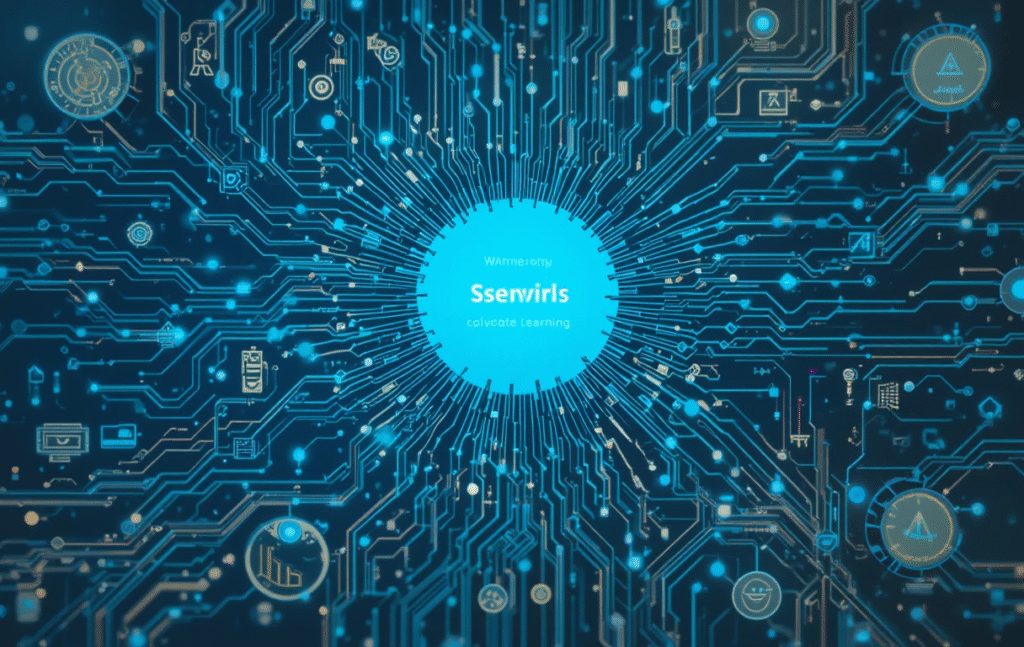Learning a new language has long been a journey of flashcards, grammar drills, and endless repetition. But in the 21st century, artificial intelligence (AI) has emerged as a powerful companion—offering personalized instruction, real-time feedback, cultural insights, and even immersive conversational practice. With AI, language learning is no longer confined to the classroom or a textbook. It’s dynamic, adaptive, and truly global.
In this blog post, we explore how AI is revolutionizing the world of language education—making learning faster, more engaging, and accessible to all.
🌐 The Global Language Learning Landscape
As of today, over 1.5 billion people are learning a foreign language worldwide. English, Spanish, Mandarin, French, and German top the list, driven by:
- Globalization and international travel
- Academic and career goals
- Cultural exploration
- Migration and refugee integration
However, traditional language learning methods often fall short due to:
- Lack of native speakers for practice
- Boring, rigid curriculums
- One-size-fits-all teaching methods
- Limited access to quality instructors
Enter AI: a transformative force making language learning smarter, faster, and more personalized.
🤖 What Is AI in Language Learning?
AI in language learning refers to the use of artificial intelligence technologies such as:
- Natural Language Processing (NLP)
- Speech recognition and synthesis
- Machine learning algorithms
- Chatbots and virtual tutors
- Computer vision (for visual-text associations)
These tools can read, write, speak, and understand human language, making them ideal for interactive language practice.

🎯 Key Benefits of AI-Powered Language Learning
1. 🧠 Personalized Learning Paths
AI tracks how you learn and adapts the content accordingly:
- Struggling with pronunciation? It suggests phonetics drills.
- Mastered basic vocabulary? It unlocks advanced content.
- Prefer visual aids? It switches to image-supported flashcards.
This custom-tailored approach boosts retention and engagement.
2. 🗣️ Real-Time Feedback on Speaking and Writing
AI voice recognition can:
- Detect accent and intonation
- Highlight mispronunciations
- Offer corrective suggestions
Similarly, AI text tools like Grammarly and QuillBot analyze grammar, tone, vocabulary, and even coherence in essays or responses.
3. 🧑🏫 24/7 Virtual Tutors
AI chatbots simulate conversations with native speakers—anytime, anywhere. They:
- Respond in full sentences
- Adapt to your language level
- Correct mistakes without judgment
Some systems even mimic real-life situations (ordering food, job interviews, travel) to build fluency in context.
4. 🎧 Listening Comprehension Practice
AI-generated podcasts or listening exercises adjust speed, difficulty, and accent variety to train your ear for different dialects and styles.
5. 🧩 Gamification and Engagement
AI-powered platforms use:
- Points and rewards
- Leaderboards
- Streak counters
- Adaptive challenges
This makes language learning addictive—in a good way!
🔧 Popular AI-Powered Language Learning Tools
1. Duolingo
- Uses AI to adapt question types and difficulty
- Employs NLP to analyze written answers
- Gamified structure with streaks, hearts, and XP
Duolingo also launched Duolingo Max, which includes an AI tutor that explains mistakes and engages in role-play.
2. Rosetta Stone
- Uses speech recognition to evaluate pronunciation
- Immersive environment with no translation—just context and imagery
- AI tracks progress to customize lessons
3. ChatGPT (OpenAI)
- Can simulate conversations in any language
- Acts as a grammar checker, vocabulary coach, and translator
- Provides cultural explanations, idiom usage, and more
4. Babbel
- Combines machine learning with linguistic research
- Focuses on conversational fluency
- Offers speech feedback using AI algorithms
5. Google Translate & DeepL
- Real-time translation powered by deep learning
- Can read and pronounce words aloud
- Visual translation via smartphone camera for signs and menus
🌍 Breaking Language Barriers Across Borders
1. Education
AI tools help international students master academic English, German, or French—essential for study abroad. Universities also use AI to:
- Deliver multilingual content
- Offer TOEFL/IELTS test prep
- Facilitate cultural orientation
2. Business
Executives and employees use AI apps to:
- Communicate with international clients
- Localize presentations or emails
- Learn industry-specific vocabulary
3. Migration & Integration
Governments and NGOs use AI tools to teach local languages to immigrants and refugees, promoting:
- Faster assimilation
- Better job opportunities
- Community building
4. Travel and Tourism
AI apps enable tourists to:
- Ask for directions
- Read menus and signs
- Engage with locals confidently
🧠 How AI Understands and Teaches Language
1. Natural Language Processing (NLP)
NLP helps AI:
- Understand user intent
- Interpret sentence structure
- Analyze meaning and tone
This is what allows AI to correct grammar or rephrase your sentence appropriately.
2. Speech Recognition
AI listens and converts your spoken words into text. It then:
- Checks pronunciation accuracy
- Detects pauses, stress, and rhythm
- Gives feedback on fluency
3. Machine Learning
The more you use the platform, the smarter it becomes:
- Predicts your learning pace
- Recommends revision areas
- Suggests new challenges based on performance
4. Voice Synthesis
AI reads text aloud with accurate accents and natural tone, helping you:
- Imitate native pronunciation
- Improve intonation and cadence
- Train your listening skills
⚖️ Ethical and Practical Considerations
While AI unlocks many doors, it also presents challenges:
1. 📉 Overreliance
Too much AI can reduce interaction with human speakers. Real-world conversation includes nuance, body language, and emotion—areas where AI still lags.
2. 🧍 Data Privacy
Speech and text inputs are often stored to train AI models. It’s important to:
- Use platforms that comply with GDPR or local privacy laws
- Review privacy settings and permissions
3. 🔀 Language Bias
Most AI models are better trained in high-resource languages like English, Spanish, and French. Less common languages or dialects may receive lower-quality feedback or have limited functionality.
4. 💸 Cost and Access
Some advanced AI tools come with premium pricing, which can limit access for low-income learners unless subsidized or publicly funded.
🔮 The Future of AI in Language Learning
1. Emotionally Intelligent Tutors
Future AI may detect frustration, boredom, or confusion and adjust the lesson in real time to maintain engagement.
2. Augmented Reality (AR) + AI
Imagine learning Japanese while walking through a virtual Tokyo street, guided by AI that translates and contextualizes signs, conversations, and cultural references.
3. Multilingual AI Assistants
A single AI assistant may soon:
- Help you switch between five languages on the fly
- Detect which language you’re using
- Offer code-switching suggestions
4. Brain-Computer Interfaces
Though futuristic, research is ongoing into AI tools that may one day allow direct brain-to-text translation—removing the need for verbal practice altogether.
💬 What Educators Say
“AI has allowed my ESL students to practice English at home and come to class more confident. It’s been a game changer.”
— Language Teacher, Canada
“With AI chatbots, I can practice business Spanish with a virtual client every night. My fluency has doubled in six months.”
— MBA Student, Argentina
“Learning Icelandic felt impossible until I found an AI coach that adapts to my learning style. Now I’m making real progress.”
— Language Learner, Germany
📚 Tips for Maximizing AI Tools in Language Learning
- Combine AI With Real Interaction
Use AI for drills and practice, but speak with humans for real-life nuance and fluency. - Be Consistent
15–20 minutes a day is more effective than long weekly sessions. - Use Voice Input Regularly
Speaking is the hardest skill. Let AI correct you often. - Explore Contextual Learning
Learn in context—use AI tools that simulate real-life conversations. - Track Progress
Many AI platforms offer analytics. Use them to set goals and celebrate milestones.
🌟 Final Thoughts: A Smarter Way to Speak the World
AI is not replacing language teachers—it’s amplifying the experience. By breaking down barriers of time, cost, and access, AI is democratizing language education like never before.
Whether you’re aiming to land a job abroad, understand a culture better, or simply enrich your mind—AI is your always-available, always-evolving language partner.
The next time you pick up your phone and say, “Hola,” “Bonjour,” or “Nǐ hǎo,” you may just be greeted by an AI—ready to take you one step closer to fluency.


